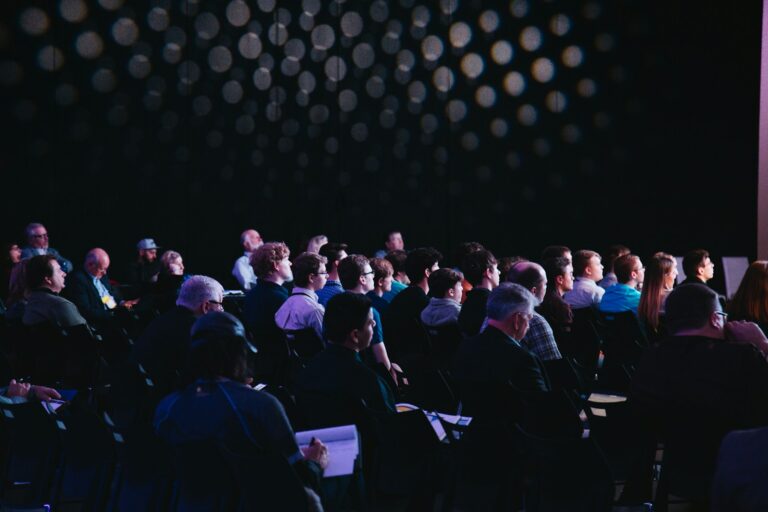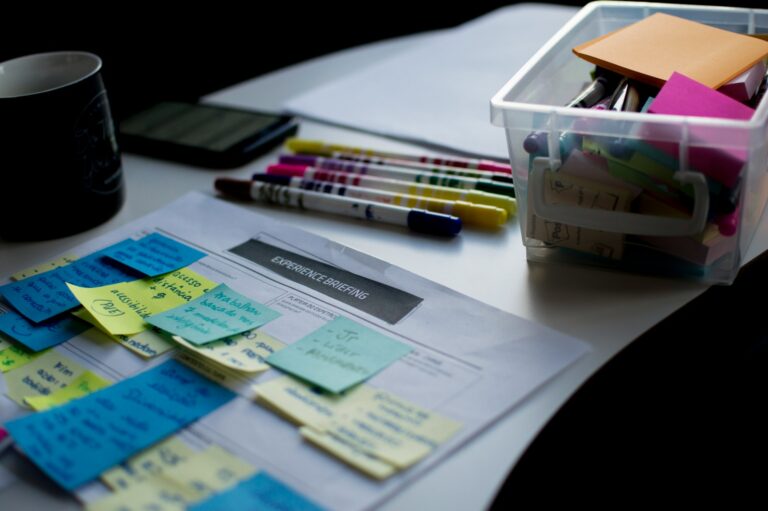Embracing failure is key to success. The idea that mistakes are stepping stones to innovation is proven by history’s biggest discoveries.
Thomas Edison once said, “Anyone who has never made a mistake has never tried anything new.” This shows how important it is to experiment and learn from mistakes.
The path to success is not always easy. It’s the ability to learn from mistakes that sets achievers apart.
Key Takeaways
- Mistakes are an essential part of the learning process.
- Embracing failure can lead to unexpected successes.
- Innovation often stems from trial and error.
- Resilience in the face of mistakes is key.
- Learning from errors can greatly improve future outcomes.
The Value of Embracing Mistakes in Personal Growth
The path to personal growth is often bumpy, with mistakes being key. By accepting these mistakes, we can learn and grow. This helps us develop new skills and insights.
How Mistakes Activate Learning Mechanisms in the Brain
Mistakes wake up our brain’s learning tools. This starts a process where our brain stores memories and learns new things. By welcoming mistakes, we unlock this natural learning ability. This makes us better at learning and using new information.
The Psychological Benefits of Accepting Imperfection
Realizing we’re not flawless and mistakes are part of learning has many benefits. It lowers the fear of failure. This lets us try new things without hesitation.
Reduced Anxiety and Stress Levels
Accepting our flaws can greatly lower anxiety and stress. This is because we no longer feel the need to be perfect. We can face challenges with a calmer mindset.
Increased Creativity and Problem-Solving Abilities
Welcoming mistakes boosts creativity and problem-solving skills. Without fear of failure, we’re more open to new ideas. This leads to creative and innovative solutions.
Having a growth mindset by embracing mistakes is vital for personal development. It helps us learn, grow, and face challenges with confidence and strength.
Anyone Who Has Never Made a Mistake Has Never Tried Anything New
Making mistakes is a natural part of learning and innovation. Many pioneers have shaped the world through their inventions and discoveries. They show that mistakes are key to progress.
The Historical Context of This Philosophy
The idea that mistakes are essential for success has deep roots. It shows that trying new things often leads to both good and bad outcomes.
Many innovators have talked about the value of perseverance and learning from failure. They believe in embracing mistakes as chances for growth.
Case Studies of Innovators Who Failed Their Way to Success
Thomas Edison and Steve Jobs are great examples of turning failures into successes.
Thomas Edison’s 1,000 Failed Attempts at the Light Bulb
Thomas Edison’s work on the light bulb is famous. He said, “I have not failed. I’ve just found 10,000 ways that won’t work.” His never-give-up attitude led to a groundbreaking invention.
Steve Jobs’ Journey Through Failure and Redemption
Steve Jobs, Apple’s co-founder, faced big setbacks, including being kicked out of his own company. But he came back and led Apple to create the iPod, iPhone, and iPad. These products changed the tech world.
| Innovator | Failure Experience | Outcome |
|---|---|---|
| Thomas Edison | 1,000 attempts at the light bulb | Successful development of the light bulb |
| Steve Jobs | Ousted from Apple | Returned to innovate revolutionary products |
These stories show that facing mistakes can lead to big breakthroughs. By seeing failure as part of learning, we can create a culture of innovation and resilience.
Identifying Your Fear Response to Making Mistakes
It’s key to understand how you react to mistakes for personal and work growth. Our first reaction to mistakes often shapes our next steps. Spotting these reactions is the first step to manage them well.
Common Fear Patterns That Block Innovation
Fears like needing to be perfect and worrying about what others think can stop us from innovating and taking risks. These fears can sneak into our choices, often in subtle ways.
Perfectionism and Its Limiting Effects
Perfectionism makes us shy away from chances where we might make mistakes. This fear can hold us back from taking risks and exploring new paths.
“Perfectionism is not the same as striving to be our best. Perfectionism is the belief that if we live perfect lives, we can somehow minimize or avoid the pain of blame, judgment, or criticism.”
Social Judgment Concerns
Being afraid of what others think can also stop us from making mistakes. This fear can make us too cautious, blocking innovation and progress.
| Fear Pattern | Impact on Innovation | Strategy to Overcome |
|---|---|---|
| Perfectionism | Leads to risk avoidance | Embracing the concept of “good enough” |
| Social Judgment Concerns | Results in fear of taking risks | Focusing on personal goals instead of what others think |
Self-Assessment Tools to Measure Your Risk Tolerance
To handle your fear, it’s vital to know how much risk you’re comfortable with. Self-assessment tools and quizzes can show you where you might need to change your approach.
- Risk Tolerance Quizzes
- Personality Assessments
- Reflective Journaling
By understanding your fears and using these tools, you can start to find ways to overcome them. This will help you become more open to stepping out of your comfort zone and taking risks.
Developing a Growth Mindset Framework
The journey to success starts with a growth mindset that welcomes challenges. This mindset lets people see mistakes as chances to learn. It builds resilience and sparks creativity. Knowing that skills can grow, people tackle challenges with eagerness and curiosity.
Practical Exercises to Transform Fixed Thinking
Changing fixed thinking to a growth mindset takes effort and commitment. Two key practices are:
- Challenging assumptions by asking critical questions
- Seeing failure as a chance to learn
The “What If I’m Wrong?” Practice
The “What If I’m Wrong?” exercise is very effective. It makes you question your beliefs and look at things differently. This helps you move beyond fixed thinking and become more open and flexible.
Reframing Failure as Data Collection
Another important practice is seeing failure as a way to gather information. Instead of seeing it as a bad thing, view it as a way to learn. This mindset lets you approach challenges with a sense of adventure and curiosity.
Creating Personal Mantras for Embracing Challenges
Creating personal mantras can help you grow. Short, empowering phrases remind you to face challenges and learn from mistakes. Examples include:
- “I welcome challenges as opportunities for growth.”
- “Mistakes are stepping stones to success.”
Repeating these mantras keeps you focused on your goals and positive when faced with obstacles.
How to Extract Valuable Lessons from Every Mistake
Every mistake teaches us something valuable. But we must learn to find and use these lessons. This process includes reflection, analysis, and being open to change.
The 5-Step Reflection Process
Learning from mistakes needs a clear reflection process. This process has several steps. They help us understand what went wrong and how to do better next time.
Documenting What Happened Without Judgment
The first step is to write down what happened without blaming yourself. Try to record the facts as clearly as you can.
Key elements to document include:
- The context in which the mistake occurred
- The actions taken leading up to the mistake
- The outcome or consequences of the mistake
Analyzing Root Causes vs. Symptoms
It’s important to tell the difference between the symptoms and the root cause of a mistake. Symptoms are the obvious effects, while the root cause is the real reason for the mistake.
For example, if a project is delayed, the symptom is the delay. But the root cause might be not having enough resources, unrealistic deadlines, or unexpected problems.
Identifying Alternative Approaches
After finding the root cause, think of different ways to avoid the mistake or lessen its effect.
Creating an Actionable Learning Journal
A learning journal is a great tool for tracking mistakes. It helps see how you’re improving over time and spot patterns or areas to work on.
To create an effective learning journal:
- Write down important incidents, including mistakes and close calls.
- Look over each entry to find lessons and areas for growth.
- Make plans based on what you’ve learned.
Here’s what a learning journal entry might look like:
| Incident | Root Cause | Lessons Learned | Action Plan |
|---|---|---|---|
| Project Delay | Inadequate Resource Allocation | Need for better resource planning | Implement a resource allocation checklist |
| Budget Overrun | Unrealistic Budget Estimates | Importance of thorough budget planning | Develop a more detailed budgeting process |
By following these steps and keeping a learning journal, you can learn valuable lessons from mistakes. This leads to growth in both your personal and professional life.
Designing Small, Strategic Risk-Taking Experiments
Embracing calculated risks is key for innovation and growth. By designing small, strategic risk-taking experiments, we can create a culture of experimentation and learning.

The Concept of Minimum Viable Failure
The concept of Minimum Viable Failure (MVF) teaches us that not every experiment will succeed. But each failure gives us valuable insights. MVF means testing ideas with the least resources needed to validate or invalidate them.
By adopting MVF, we can reduce the fear of failure and encourage strategic risk-taking. This method allows us to refine ideas based on real feedback.
Building a Progressive Risk Ladder
Building a progressive risk ladder means starting with low-stakes challenges. Then, we gradually increase the complexity and impact of the risks. This structured approach helps build resilience and confidence.
Starting with Low-Stakes Challenges
Begin with risks that have minimal consequences but offer significant learning opportunities. This could involve testing new approaches or tools in a controlled setting.
Gradually Increasing Complexity and Impact
As we become more comfortable with risk-taking, we should increase the complexity and impact of our experiments. This gradual escalation builds a strong risk tolerance and helps us navigate uncertainty better.
By following this structured approach to risk-taking, we can develop the skills needed to take calculated risks. These risks lead to innovation and success.
Building Resilience Muscles Through Deliberate Practice
Building resilience through deliberate practice is key to overcoming obstacles. It helps foster a growth mindset. Resilience lets us handle or bounce back from tough situations. It’s a skill we can grow with practice.
Neuroscience-Based Techniques for Emotional Recovery
Neuroscience-based techniques can boost resilience. Mindfulness meditation and deep breathing exercises calm the mind and lower stress. Adding these to your daily routine can boost emotional resilience.
Creating a Personal Resilience Routine
Creating a personal resilience routine means setting aside time each day. It involves practices that boost resilience. This can include:
- Morning affirmations to start the day positively
- Evening reflections to review the day’s challenges and wins
Morning Affirmations for Risk-Taking
Morning affirmations can build confidence and prepare for challenges. Examples are: “I can handle anything that comes my way,” and “I see challenges as chances for personal development.”
Evening Reflection on Daily Challenges
Reflecting on the day helps spot areas for growth and solidifies lessons. It’s a time to celebrate wins and think about how to use them in the future.
By making these practices part of your daily life, you can grow your resilience. This helps you tackle challenges better, supporting your growth mindset and personal development.
Fostering a Mistake-Positive Environment
A mistake-positive environment encourages people to take risks. It sees failures as steps to success. This culture values mistakes as chances to learn.
Communication Strategies for Teams and Families
Good communication is key in a mistake-positive setting. It makes people feel safe to share without fear.
Replacing Blame Language with Learning Language
Switching to learning language is important. Instead of blaming, focus on what can be learned. Say “let’s analyze what went wrong and how we can improve.”
Celebrating “Failure of the Week” Rituals
“Failure of the Week” rituals help talk about mistakes openly. They share a failure, what was learned, and how to use it in the future.
Setting Healthy Boundaries Between Mistakes and Negligence
It’s important to tell the difference between mistakes and negligence. Clear boundaries and expectations keep the balance right. They encourage risk-taking while keeping accountability.

By embracing challenges and learning from mistakes, teams and families grow. This culture supports personal growth and drives success.
To step out of your comfort zone and face challenges, take calculated risks. See failures as chances to grow. This mindset is vital in today’s fast world.
Transforming Mistakes into Innovation Opportunities
Mistakes are not just errors; they are stepping stones to innovation. The right mindset is key. By embracing failure, we can find new paths to success.
The Pivot Process: From Failure to Breakthrough
The pivot process is about changing direction after failure. It uses insights to guide the new path. This is vital for turning mistakes into success.
Identifying the Hidden Opportunity Within Each Setback
When we face a setback, we must analyze what went wrong. We look for opportunities hidden in the failure. This requires a deep look at the situation.
Prototyping New Solutions Based on Mistake Insights
After finding the opportunity, we create new solutions. We try different approaches based on what we learned from the failure.
Measuring Success After Implementation
After trying new solutions, we must measure their success. We set clear goals to see how well they work. We make changes as needed.
This approach helps us learn from mistakes. It drives innovation and success for all.
Conclusion: Making Mistakes with Purpose and Confidence
Embracing mistakes is key to personal growth. It lets people learn and innovate. The saying “Anyone who has never made a mistake has never tried anything new” is very true. It shows why stepping out of your comfort zone is important for success.
We’ve looked at how mistakes help us grow, the value of a growth mindset, and how to learn from errors. By following these ideas, you can see mistakes as chances to grow, not just failures.
As you go on, remember that making mistakes with purpose and confidence is essential. It makes you stronger and more creative. You’ll be able to turn problems into chances for growth and success in your life and work.








Every time I visit your website, I’m greeted with thought-provoking content and impeccable writing. You truly have a gift for articulating complex ideas in a clear and engaging manner.
Its like you read my mind You appear to know a lot about this like you wrote the book in it or something I think that you could do with some pics to drive the message home a little bit but instead of that this is fantastic blog An excellent read I will certainly be back
Hey there You have done a fantastic job I will certainly digg it and personally recommend to my friends Im confident theyll be benefited from this site
My brother suggested I might like this website He was totally right This post actually made my day You cannt imagine just how much time I had spent for this information Thanks
Wow amazing blog layout How long have you been blogging for you made blogging look easy The overall look of your web site is magnificent as well as the content
Ive read several just right stuff here Certainly price bookmarking for revisiting I wonder how a lot effort you place to create this kind of great informative website